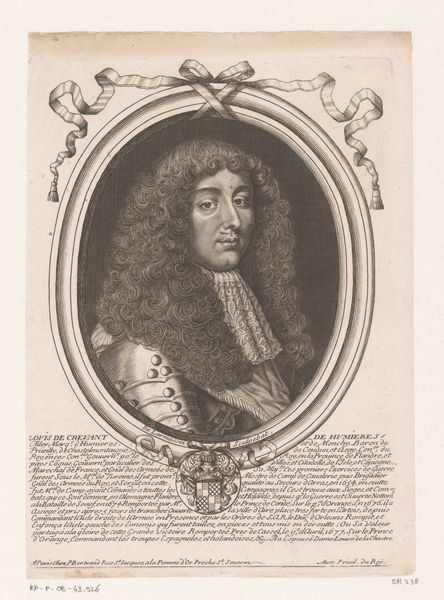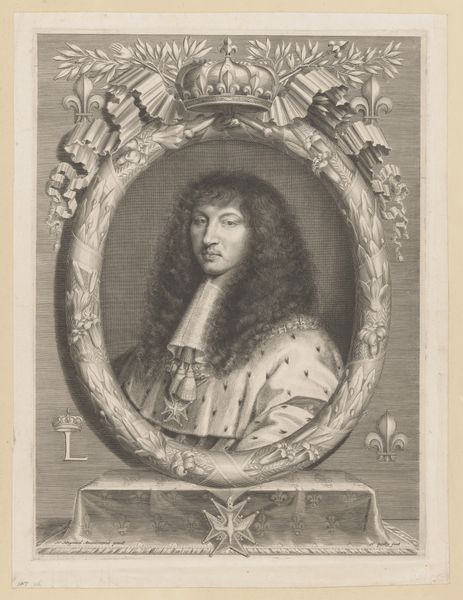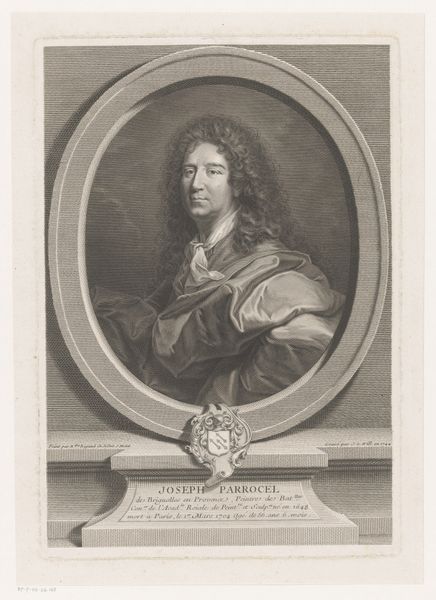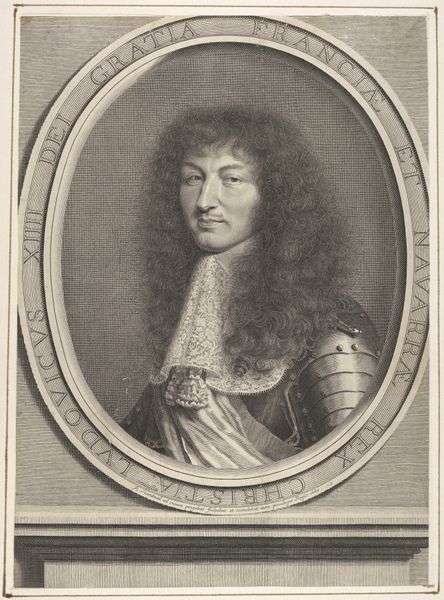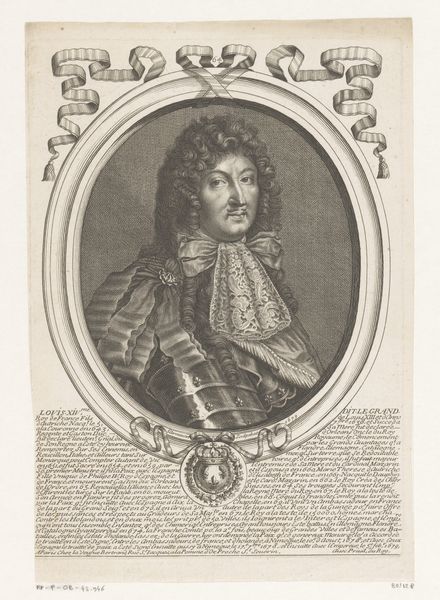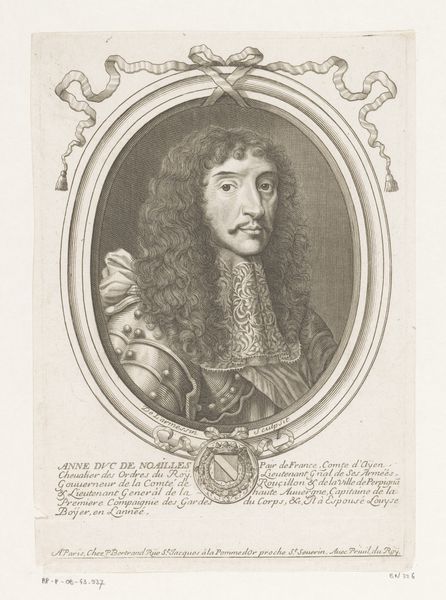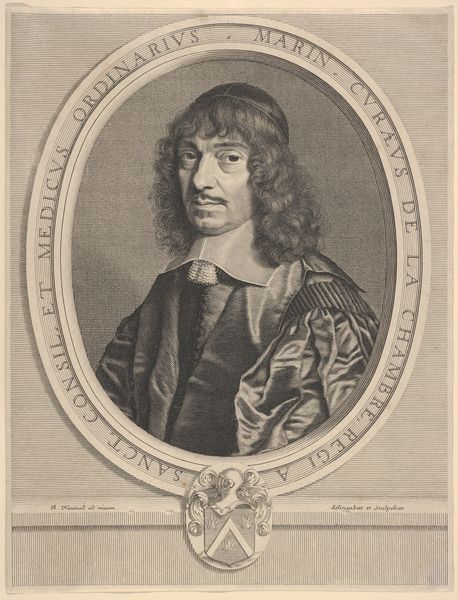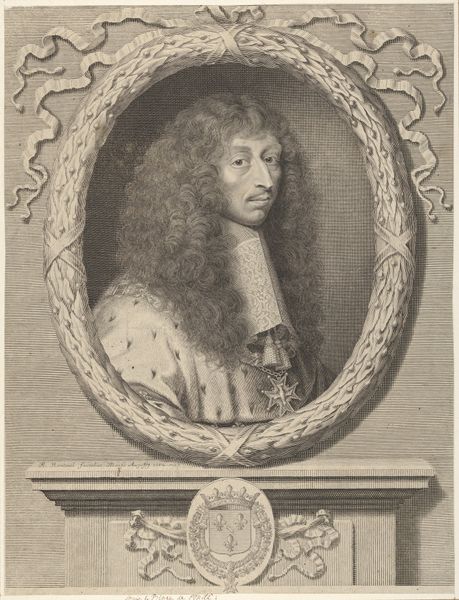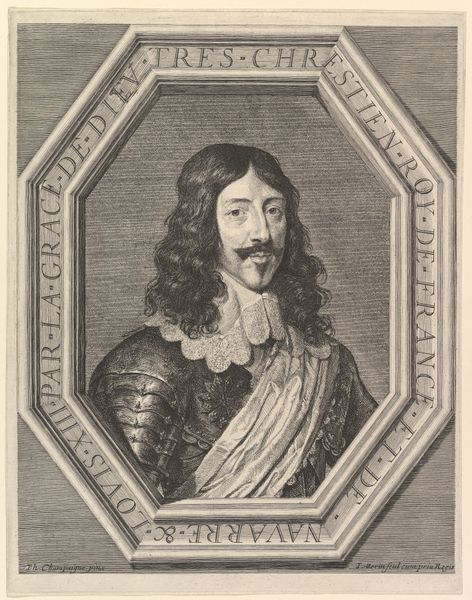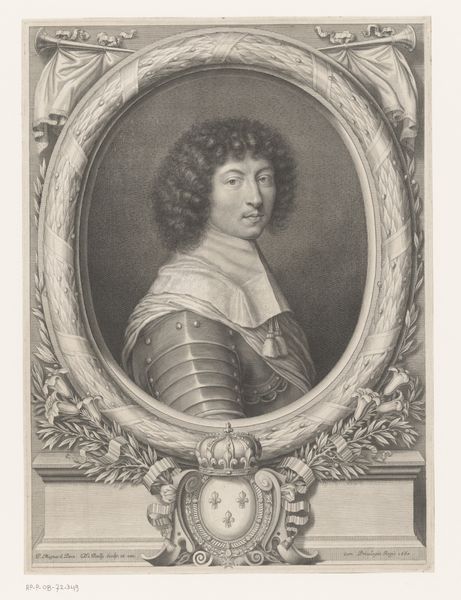
Bernard de Foix de La Valette, duc d'Eperon 1645 - 1655
0:00
0:00
drawing, print, engraving
#
portrait
#
drawing
#
baroque
# print
#
engraving
Dimensions: Sheet: 12 3/4 × 10 1/16 in. (32.4 × 25.6 cm)
Copyright: Public Domain
Editor: Here we have Robert Nanteuil's engraving of "Bernard de Foix de La Valette, duc d'Eperon," dating from 1645 to 1655. The detail is extraordinary, especially in the hair and armour. It’s striking how Nanteuil uses the oval frame and heraldic symbol to elevate the sitter's status. What social function did portraits like this serve? Curator: Exactly! These weren't just pictures; they were carefully constructed representations of power. Consider the subject, the Duc d'Eperon: a high-ranking noble at a time when the French aristocracy was navigating complex political terrain with the monarchy. The portrait, as a print, could be reproduced and circulated. How do you think this wider distribution affected its impact? Editor: I imagine it allowed him to project an image of authority beyond the court, maybe even shape public perception? Were these images tools of propaganda? Curator: Certainly, on a subtle level. Think about the armour, not just as clothing but as a symbol of military might and protection. And the elaborate hairstyle? It's meticulously rendered, indicative of wealth and attention to personal presentation, and deeply ingrained into the aesthetic sensibilities of the Baroque era, with the powerful reign of Louis XIV as its centre. These elements all contribute to a carefully curated message about the Duc’s position. How do you read the context with the rise of Absolutism in France? Editor: It makes me wonder about the message he wanted to send, whether of allegiance to the Crown or as a reminder of noble power in the face of it. The wide distribution afforded by the print medium could subtly emphasize that message. Curator: Precisely. It prompts us to analyze not just the visual elements, but the political and social forces at play in their creation and distribution. Consider the role of institutions such as the Royal Academy of Painting and Sculpture at the time. It provided training for artists, patrons, as well as defining what 'good' art meant. Did you notice a visual strategy that artists like Nanteuil used? Editor: Now I see how a portrait like this reflects a whole network of power and influence, more than just the individual portrayed. Thanks for making me see the bigger picture! Curator: My pleasure! These images aren’t neutral records; they’re active participants in shaping history. Looking at art through that lens is always revealing.
Comments
No comments
Be the first to comment and join the conversation on the ultimate creative platform.

